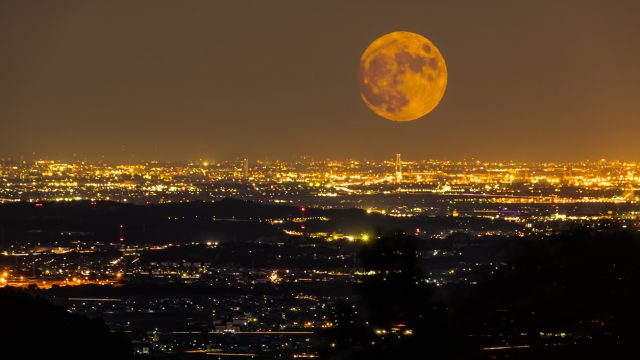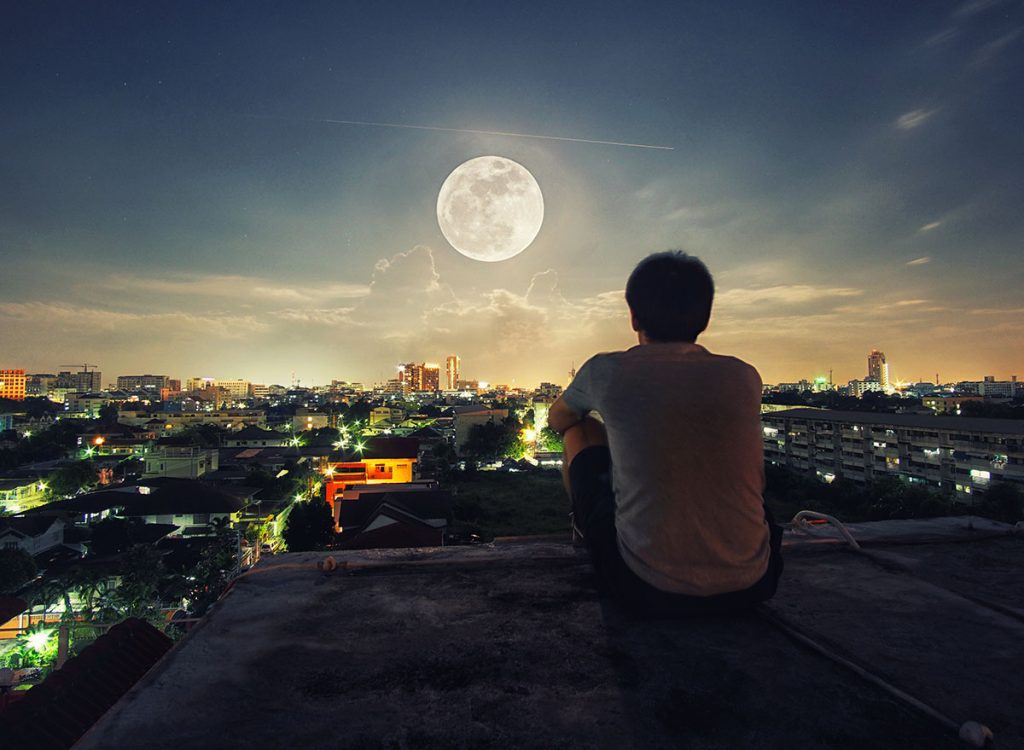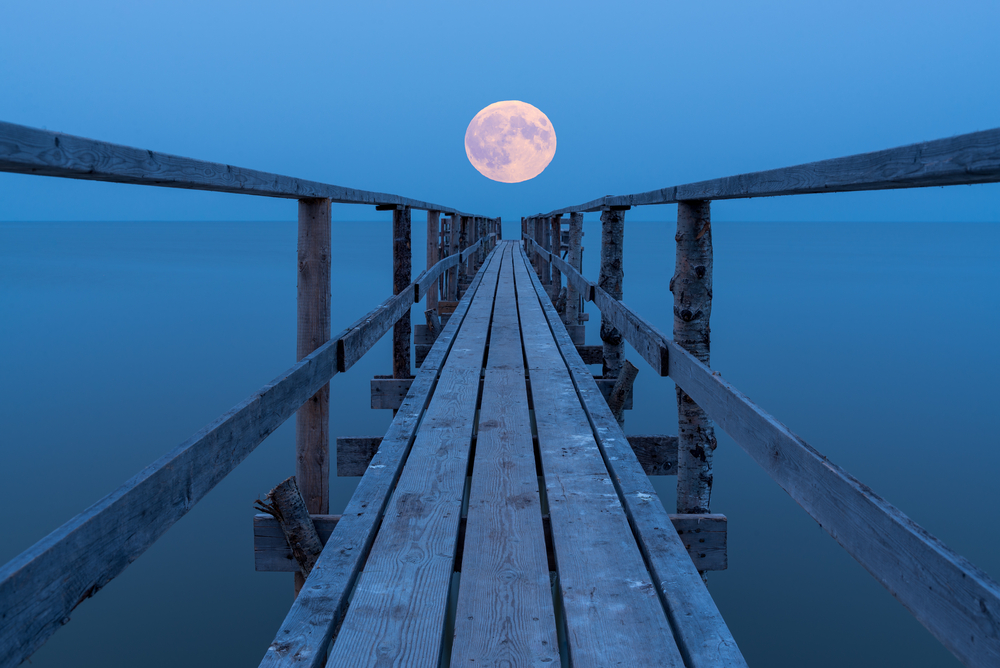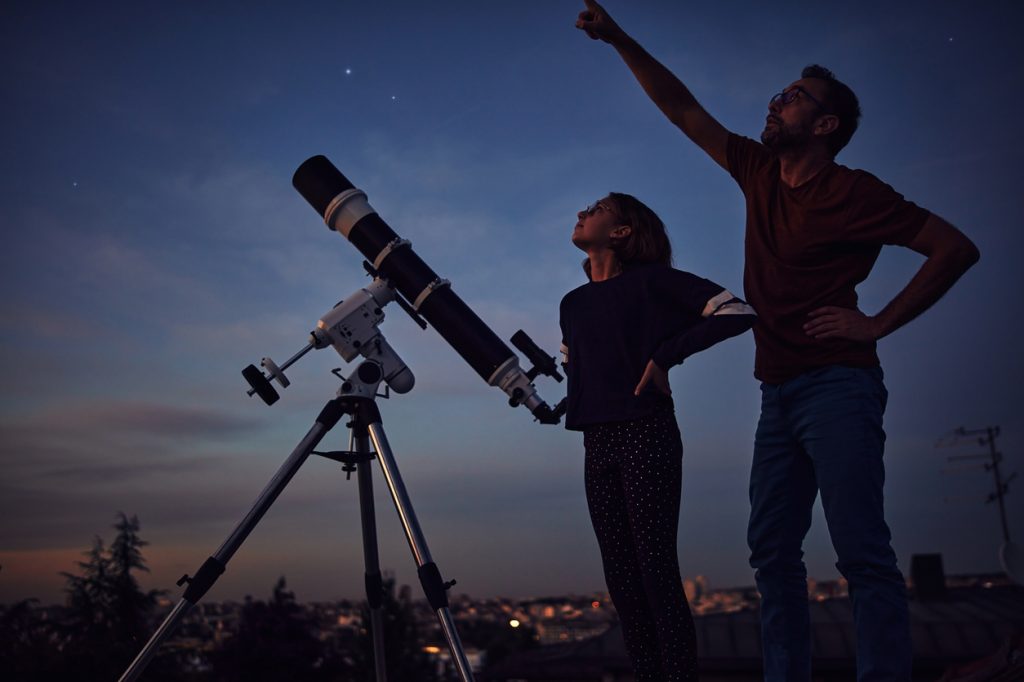Pumpkin-Like Harvest Moon Will Light Up the Night Sky Friday—Here’s How to See It

For casual stargazers, special events involving the moon tend to stand out. Along with meteor showers and some comets, they’re one of the few occasions when you don’t need a telescope to take it all in. This is especially true when the biggest object in the night sky is even more prominent and brighter than usual. And this week, you might want to consider heading outside to check out the pumpkin-like Harvest Moon that will light up the night sky on Friday evening. Read on to find out how you can see it.
RELATED: The Next Total Solar Eclipse Will Be the Last Until 2044, NASA Says.
The full Harvest Moon will rise this Friday and light up the night sky.

In most areas, the earliest days of fall provide some of the last wisps of comfortable stargazing weather before the deep winter chill sets in. Fortunately, this week also brings an extraordinary sight as the full Harvest Moon rises on Friday night, lighting up the sky with its captivating reddish-orange pumpkin-like glow, The Washington Post reports.
The term for this month’s full moon comes from Indigenous peoples in North America, who historically used it to describe the bright cycle that arrives just as crops become ready for harvest. The added brightness also traditionally helped them work longer to complete the task, per The Post.
RELATED: The 10 Best Destinations for Stargazing in the U.S.
This also marks the fourth and final supermoon of the year.

Even if it is seasonally appropriate, this isn’t the only time of the year when the moon will cast a unique hue, as all full moons take on an orange-colored tint as they creep above the horizon, according to The Post. But it does mark the fourth consecutive and final supermoon of the year.
As the name suggests, a supermoon refers to any time a full moon rises while at its perigee—or its closest point to Earth in its orbit, according to Space.com. This occurs because the moon’s elliptical-shaped orbit changes the distance between us and our satellite at different times.
The events are particularly special for people who typically enjoy looking up at the moon, as it beams about 30 percent brighter and appears 14 percent larger than a standard full moon, per Space.com. And while the brightest supermoon of the year occurred last month during what also happened to be a blue moon—or the second full moon to take place in a month—this one stands out as the last until August 2024.
RELATED: Intense Solar Storms May Peak Faster Than Expected—What That Means for Earth.
Here’s how to get the best possible view of the Harvest Moon.

Unlike other celestial objects, spotting a full moon doesn’t require a star map or compass. Those on the East Coast of the U.S. should see it begin to rise over the horizon around 6:33 p.m., when its pumpkin-like orange huge will be most prominent for the initial stages of its climb into the sky, according to Space.com.
Even though you’ll be able to see it clearly with the naked eye, a pair of binoculars or a telescope will make it even easier to spot finer details on the moon’s surface. And because of the timing of when it hits its true full phase, you shouldn’t get too disappointed if local weather conditions block out your view.
“You can go at least a day in either direction, maybe two in each direction, and it’s going to look just as full to most people,” Tony Rice, a NASA ambassador, told The Post.
RELATED: Upcoming “Ring of Fire” Solar Eclipse Has Experts Issuing a Safety Warning.
The planets will also be putting on a show for anyone who makes it outside.

Of course, the moon won’t be the only object dancing across the sky on Friday night and Saturday morning. Planets from our solar system will also make prominent appearances, beginning with Jupiter rising above the horizon around 8:20 p.m. EDT to the left of the moon, according to Space.com.
Not long after the gas giant dips back below the horizon a few hours after midnight, neighboring Venus will begin to rise around 4 a.m. EDT and remain easy to spot even as sunrise approaches, thanks to its brightness. And at 5:31 a.m. EDT, a faint Mercury will become briefly visible before the sunrise washes it out.
RELATED: For more up-to-date information, sign up for our daily newsletter.